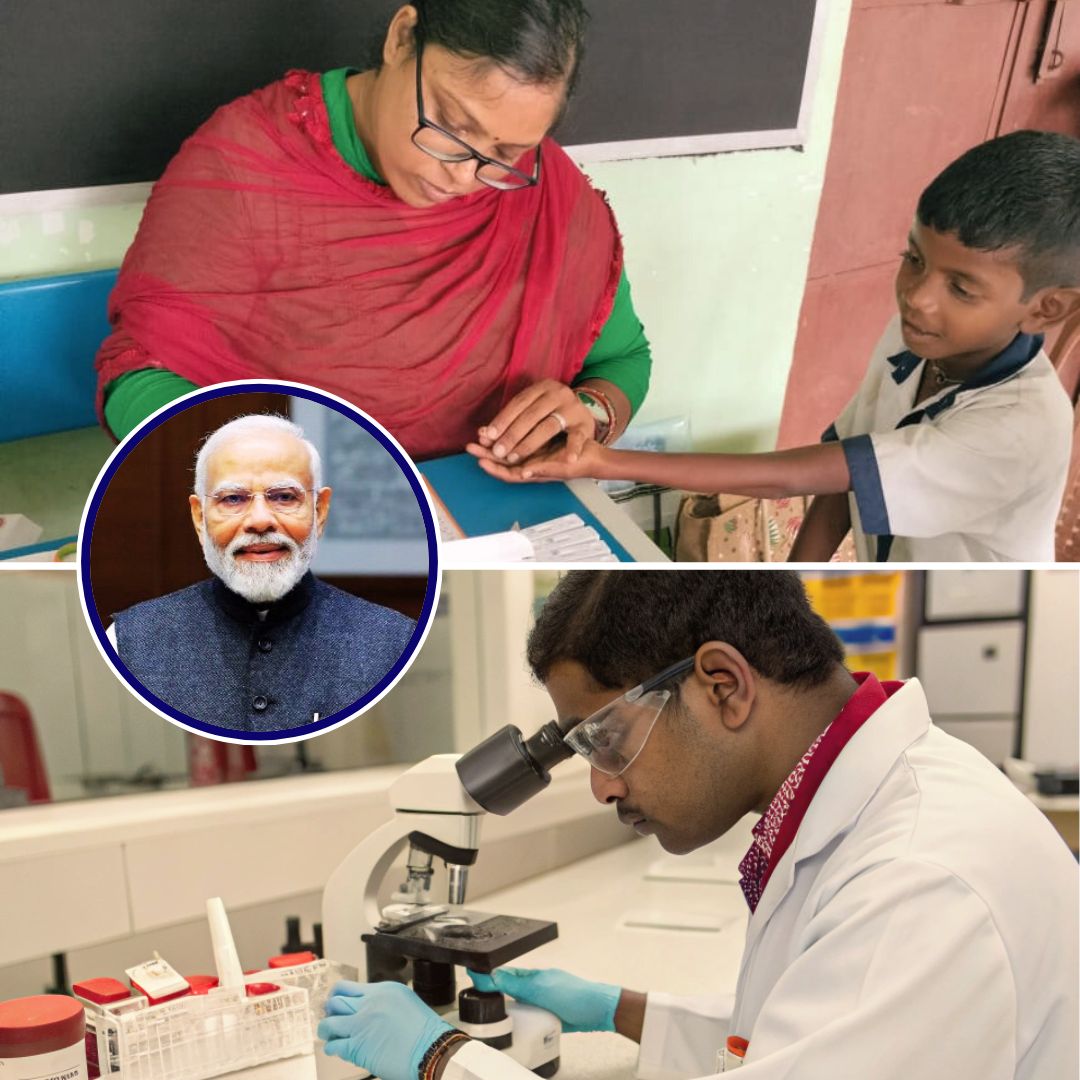India’s National Sickle Cell Anaemia Elimination Mission has screened six crore people aged 0 to 40 in 17 high-burden states as of July 2025, identifying 2.15 lakh diagnosed patients and over 16.7 lakh sickle cell gene carriers. Launched by Prime Minister Narendra Modi in July 2023, the mission plans to screen seven crore individuals by 2026 and aims to eliminate sickle cell anaemia by 2047. A key breakthrough includes the rollout of affordable, government-approved test kits priced under ₹100, along with rapid tests at Primary Health Centres (PHCs), enhancing reach especially in remote tribal areas.
Mission Progress and Expanding Reach
In just two years, the mission has reached nearly 86% of its target population, deploying validated Point-of-Care Testing (POCT) kits across remote and tribal areas. These kits offer rapid, reliable diagnosis onsite, allowing immediate counselling and referral. States such as Madhya Pradesh, Gujarat, Rajasthan, Telangana, Karnataka, and Uttarakhand have excelled by screening large proportions of their populations.
Meanwhile, Odisha, Chhattisgarh, Madhya Pradesh, Maharashtra, and Gujarat continue to report the highest number of diagnosed cases, reflecting the regional concentration of the disease. The distribution of over 2.6 crore health cards empowers patients and carriers to access follow-up medical care and counselling services, strengthening continuity of care. The government’s decision to reduce the cost of test kits to under Rs 50 has further expanded accessibility, crucial for hard-to-reach tribal territories.
Integrated Care and Government Commitment
The mission is embedded within existing national health programmes such as the National Health Mission, Rashtriya Bal Swasthya Karyakram (RBSK), and Pradhan Mantri Surakshit Matritva Abhiyan, ensuring seamless resource sharing and outreach. Newborn screening and antenatal testing have become priorities to identify infants and carriers early, thus improving prognoses through timely interventions.
Hydroxyurea — a key medication shown to reduce pain crises and hospitalisations in sickle cell patients — has been added to the National Health Mission’s Essential Drugs List, enhancing accessibility and affordability. Centres of Excellence for haemoglobinopathies and Integrated Centres for Hemoglobinopathies and Haemophilia have been established to enhance diagnosis, treatment, and research capacity.
Collaborative advanced research by bodies like the Council of Scientific and Industrial Research (CSIR) ventures into gene editing and other innovative therapies, representing the future of curative care.
Expert Advice and Importance of Early Intervention
Health experts from the Indian Council of Medical Research (ICMR) and the National Institute of Research in Tribal Health emphasise that early detection through newborn and antenatal screening dramatically improves disease management and reduces mortality.
Genetic counselling plays a vital role by helping carriers and families understand inheritance patterns and preventive options, thus limiting disease transmission. Experts encourage holistic approaches that combine scientific advances with cultural sensitivity, urging integration of traditional tribal health systems and local community health workers to foster acceptance and adherence to treatment regimens.
Role of Data and Technology in Mission Implementation
The mission utilises a dedicated, real-time digital dashboard and a central sickle cell disease portal for nationwide data consolidation. This infrastructure tracks screening numbers, diagnoses, and follow-ups, helping identify underserved areas and resource gaps. The use of technology enhances transparency, accountability, and efficiency, enabling targeted interventions and programme adjustments based on evolving data trends.
The Logical Indian’s Perspective
The National Sickle Cell Anaemia Elimination Mission is a commendable blend of scientific innovation and social empathy aimed at uplifting India’s tribal populations, historically marginalised in health services. By prioritising universal screening, affordable treatment, community engagement, and culturally sensitive counselling, the mission exemplifies compassionate public health practice. This initiative not only promises to reduce suffering caused by a debilitating genetic disease but also sets a precedent for addressing other inherited disorders through inclusive, data-driven policies.











